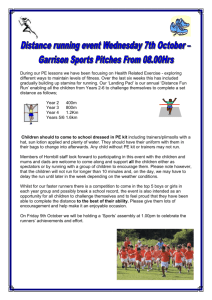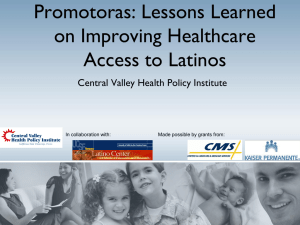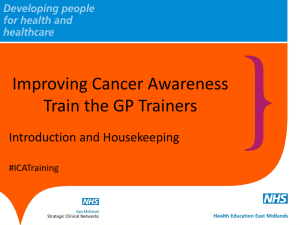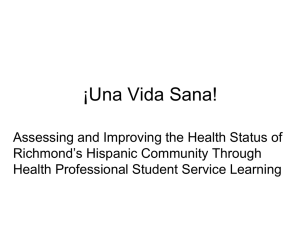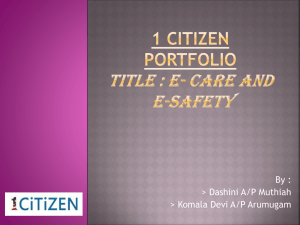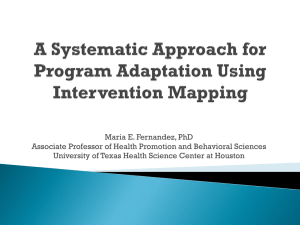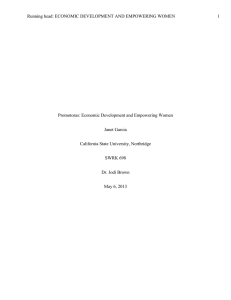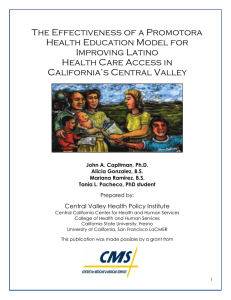Non-English Speaking Education and Outreach: Partnering with
advertisement
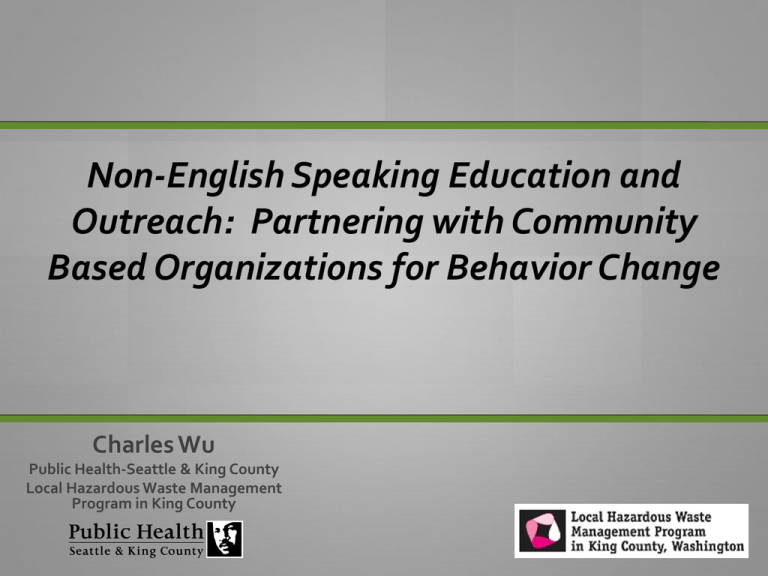
Non-English Speaking Education and Outreach: Partnering with Community Based Organizations for Behavior Change Charles Wu Public Health-Seattle & King County Local Hazardous Waste Management Program in King County King County LHWMP Program Mission To protect and enhance public health and environmental quality in King County by reducing the threat posed by the production, use, storage and disposal of hazardous materials. What does Equity mean to you? Partnering with the Community Community Grants Program A community participatory approach that supports the community to develop their own strategies to reduce risks and promote sustainable results. Community Grant Goal From hierarchical and top down approach to community participatory practice: engage, educate, partner, share resources, build capacity Gov’t and Institutions Residents Local health depts. CBOs, community groups Community residents Gov’t and Institutions Community based Orgs and Groups Health Depts. Why a community grant? (as opposed to a “traditional” contract) Facilitates creation of a partnership Two-way exchange of information, resources and ideas Build both parties’ capacity A Specific Community Grant: Community-Directed Partnership • Involving the community at the outset • Promoted to over 60 community-based groups • Technical assistance in applying for grant The Community Partner SOAR focuses on: SOAR is a community coalition working together to promote the healthy development of children, youth, and families in King County. • Impacting families from underserved, disconnected communities • Building community capacity • Connecting communities to multiple and complex support systems. Vetting the plan and getting consensus ACTING ON WHAT WE HEARD Asked 5 ethnic groups their preferences ACTING ON WHAT WE HEARD COMMUNITY CONVERSATIONS Gathered input from community leaders ACTING ON WHAT WE HEARD PROJECT PROMOTION Community Engagement Process Created a plan based on their preferences The community implements the plan The Community Voted 5 ethnic groups 2013 summary 10 community conversations 4 environmental health topics 80+ participants 100% provided input on the direction of the project Community Conversations The results from 2013 Service Delivery: WHAT WE WANT! Another Example: The Volunteer Training Network “Opening Doors into Communities” The Promotora Model Same language Community member Trusted Same culture Promotora Lay person Based on the Promotora Model -- a Public Health community engagement model. Developed for outreach into Hispanic communities. Promotora means “one who promotes” Capacity Building: Preparing and Supporting the Volunteer Trainers Train “LHWMP College” • LHWMP staff = “Professors” • Develop LHWMP curriculums • Certify ‘Graduates” as Volunteer Trainers (includes background checks) • Provide educational tools and materials • Program evaluation Support Field Logistics • Recruit and train Promotoras • Host “College” trainings • Help Promotoras organize their community • Supply materials to Promotoras • Receive input on materials and curriculums • Supply food at community trainings Tools for the Trainer TEACHING KITS Maximize pictures and handson activities, minimize words Designed to meet the needs of visual, auditory, and kinesthetic learners Translated to multiple languages Components of a teaching kit: • 11” x 17” posters • “Touch” Box • Demonstration Kit Teaching Kits in Action! A Measure of “Reach”: So far in 2014, 20 volunteer trainers taught > 120 participants Encouraging Behavior Change • Participants receive a “Takeaway Kit” to practice what they learned • Safer Cleaning: Baking Soda Vinegar Bon Ami® Scouring Powder Murphy Oil Soap Microfiber Cloth Spray Bottle DIY cleaning product recipe card Behavior Change: A Measure of “Impact” 64% used the lead swab tester Behavior change 69% changed their cleaning habits (90 days later) What we’ve learned: Adaptive Management Learning as we go, adapting as needed Still learning…failing forward…don’t be afraid of making mistakes Partnerships requires careful and thoughtful relationship building and maintenance But when done right, partnerships create sense of ownership, buy- in, and commitment Next Steps: Smaller grants, but reaching more nonprofits Formal evaluation plan For more information: Charles Wu, REHS, MBA Charles.Wu@kingcounty.gov (206)263-8534 Public Health-Seattle & King County, Local Hazardous Waste Management Program All photos courtesy of www.lhwmp.org and www.facebook.com/lhwmp
